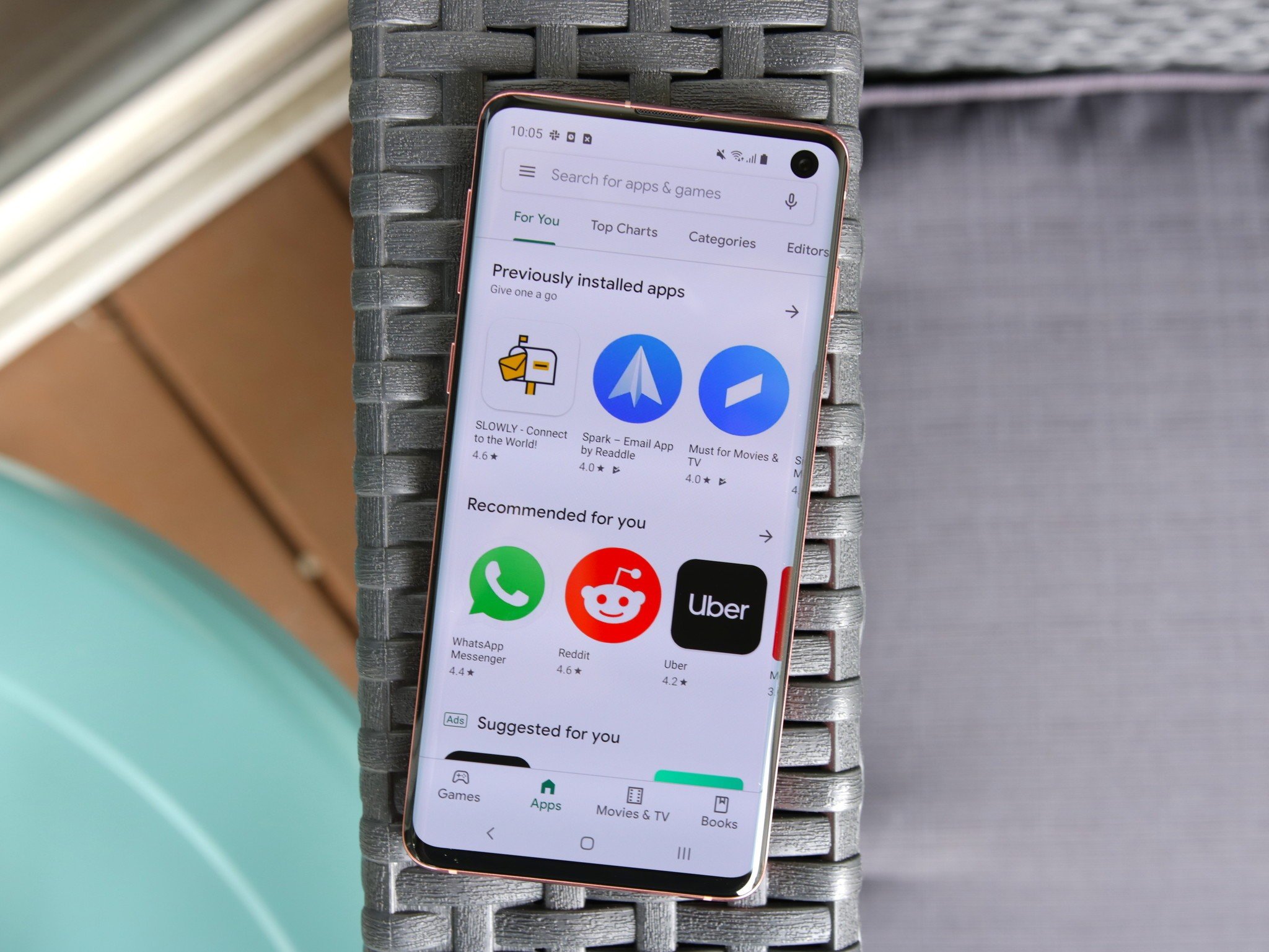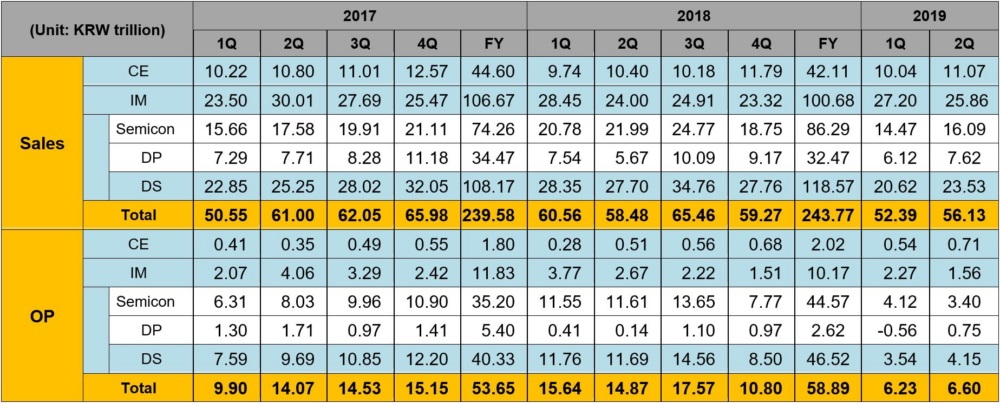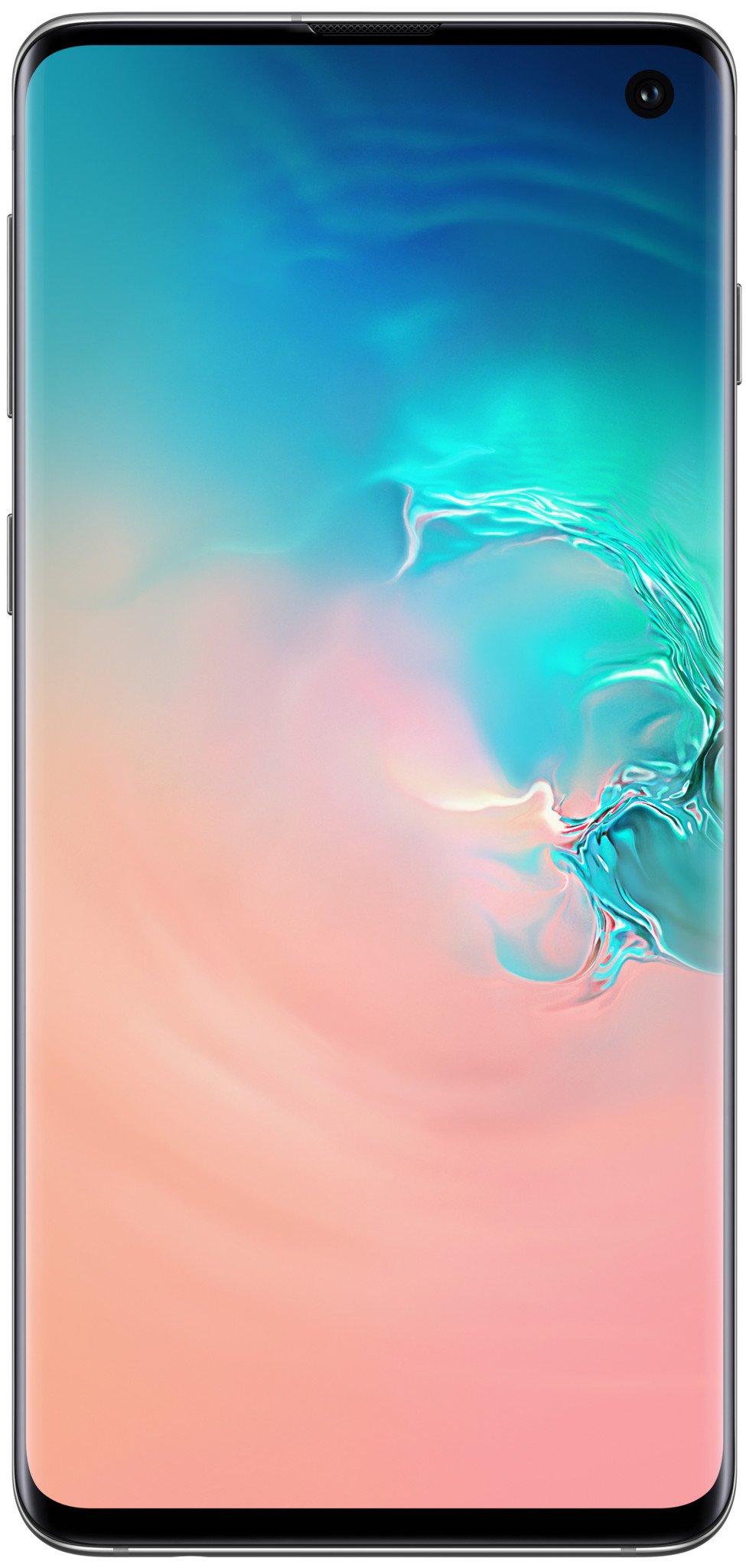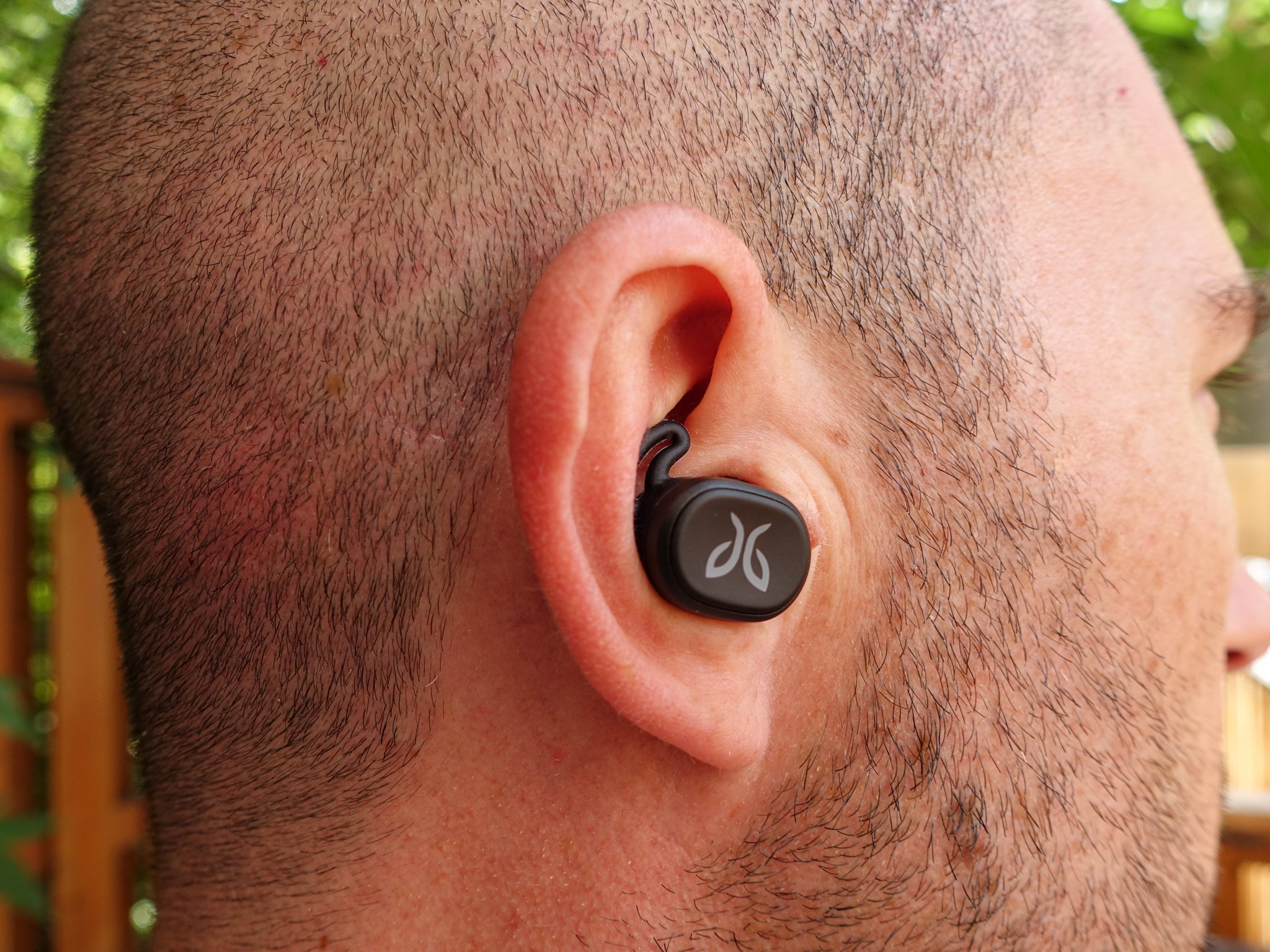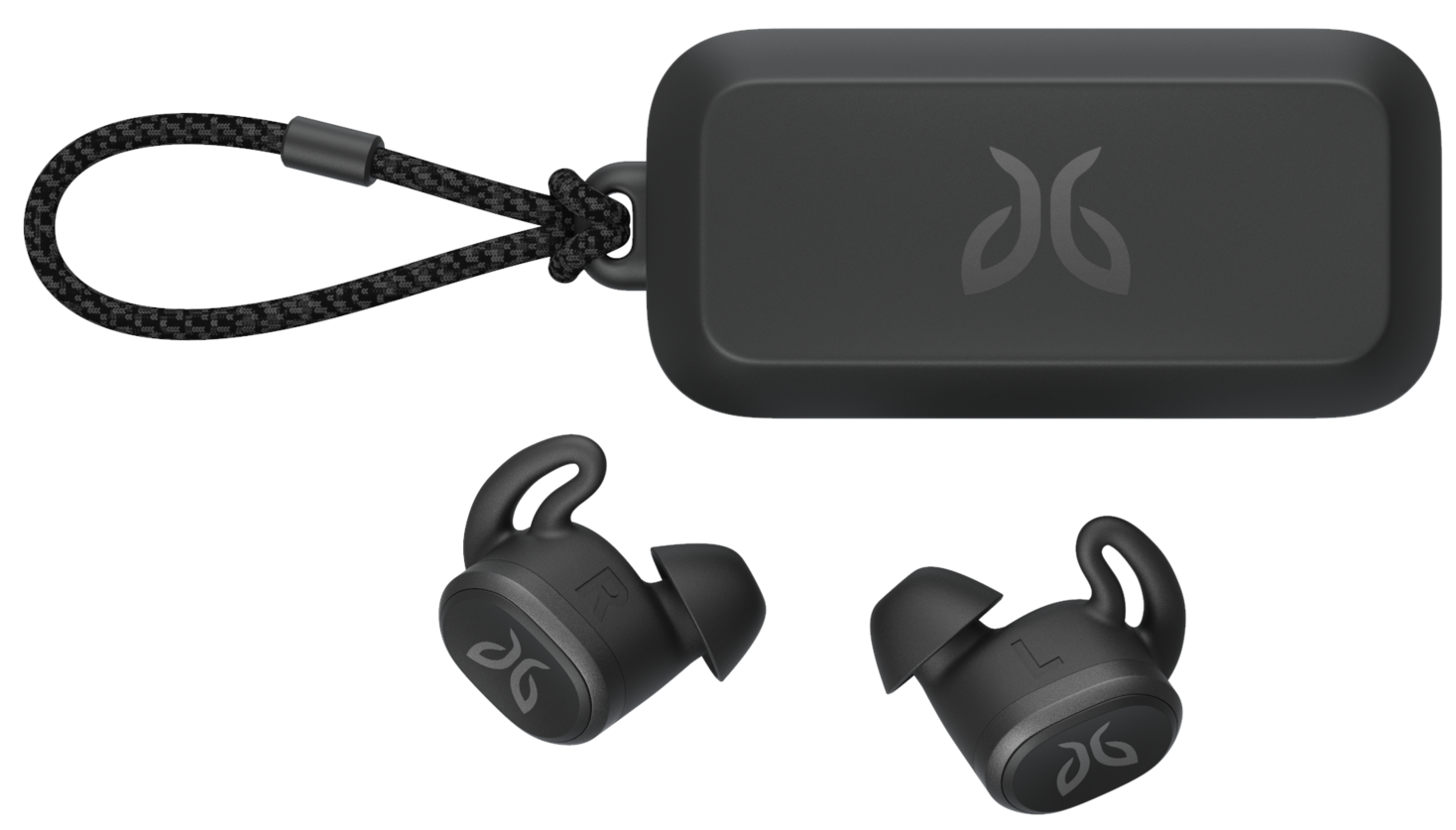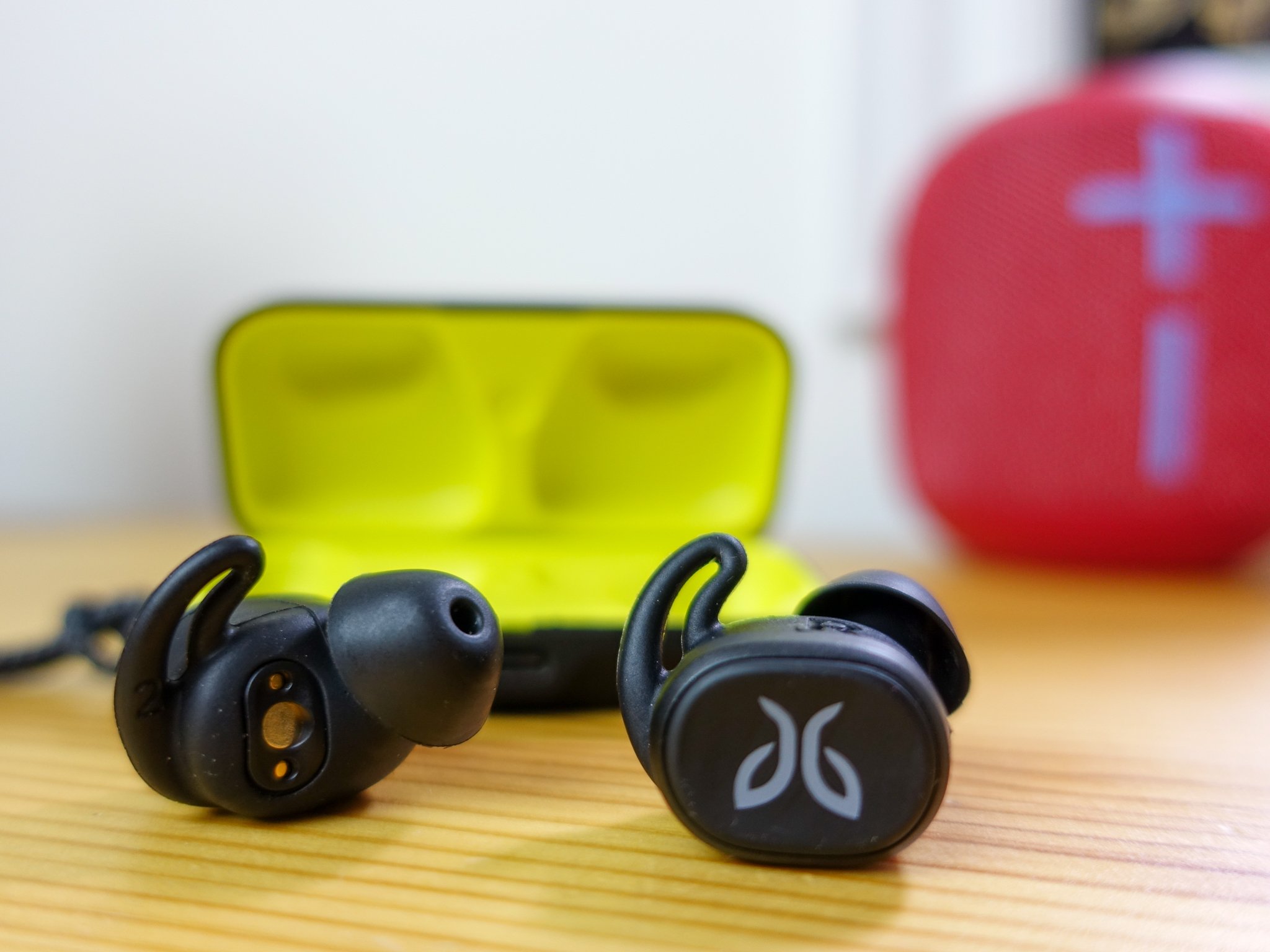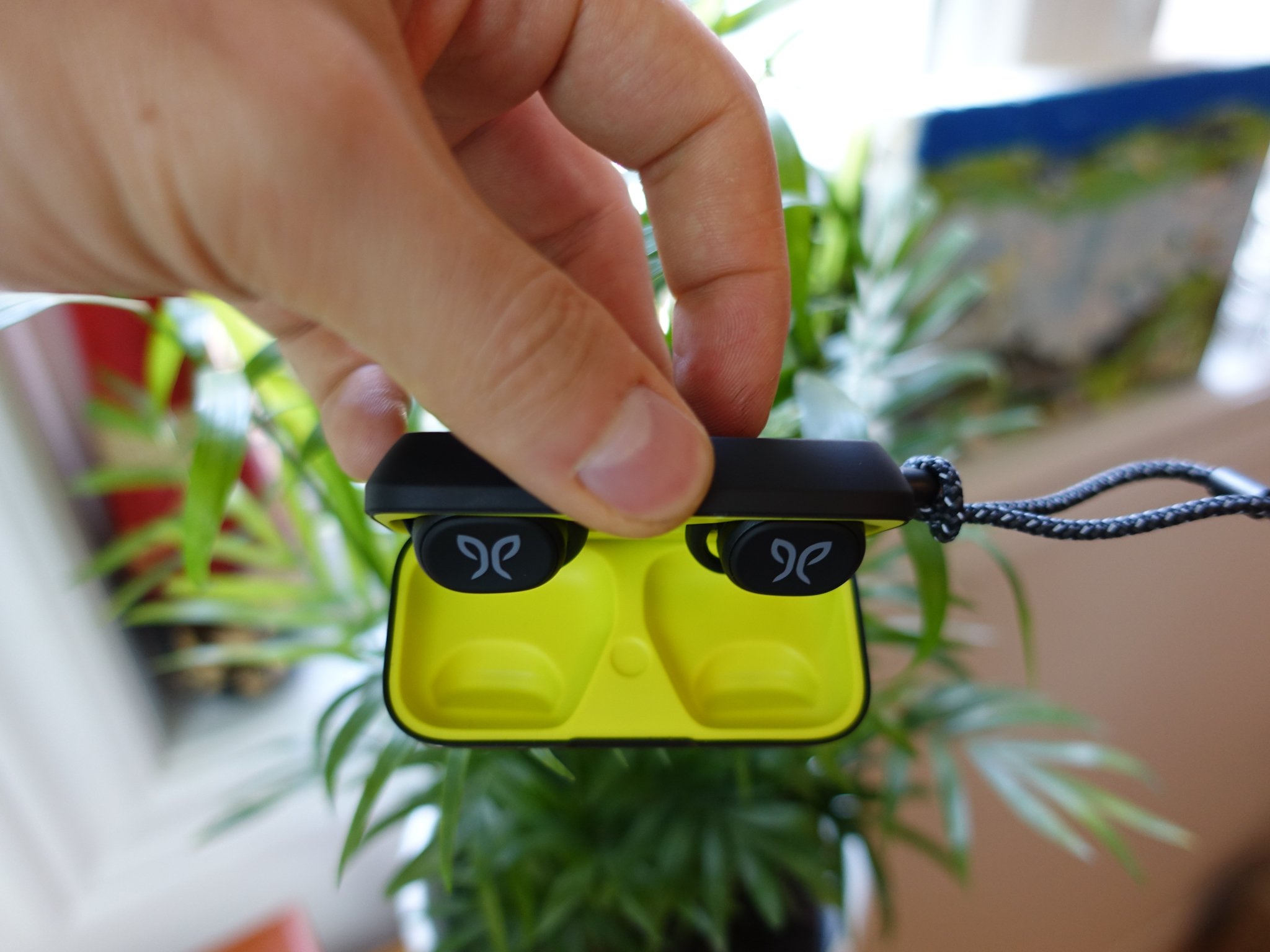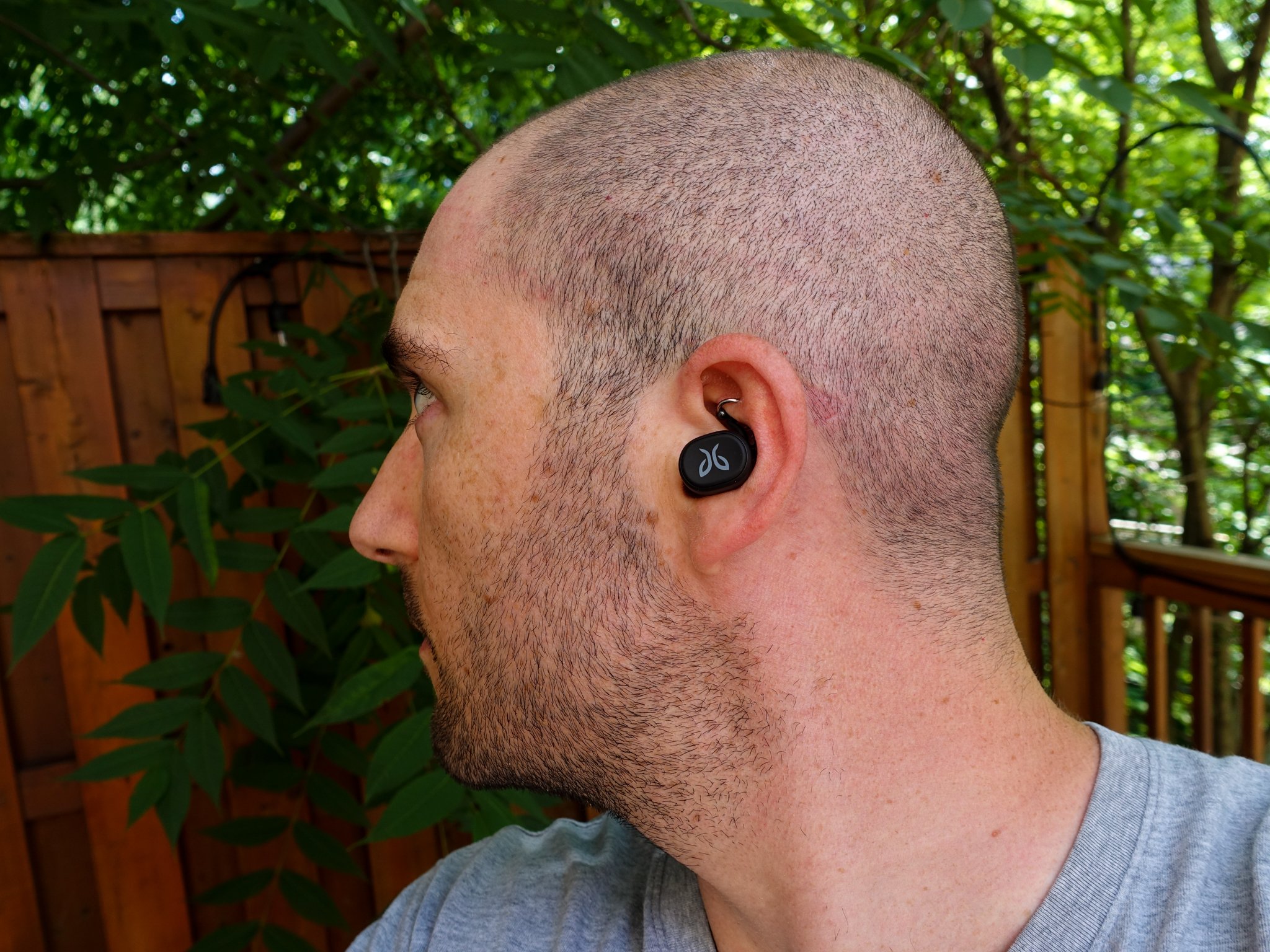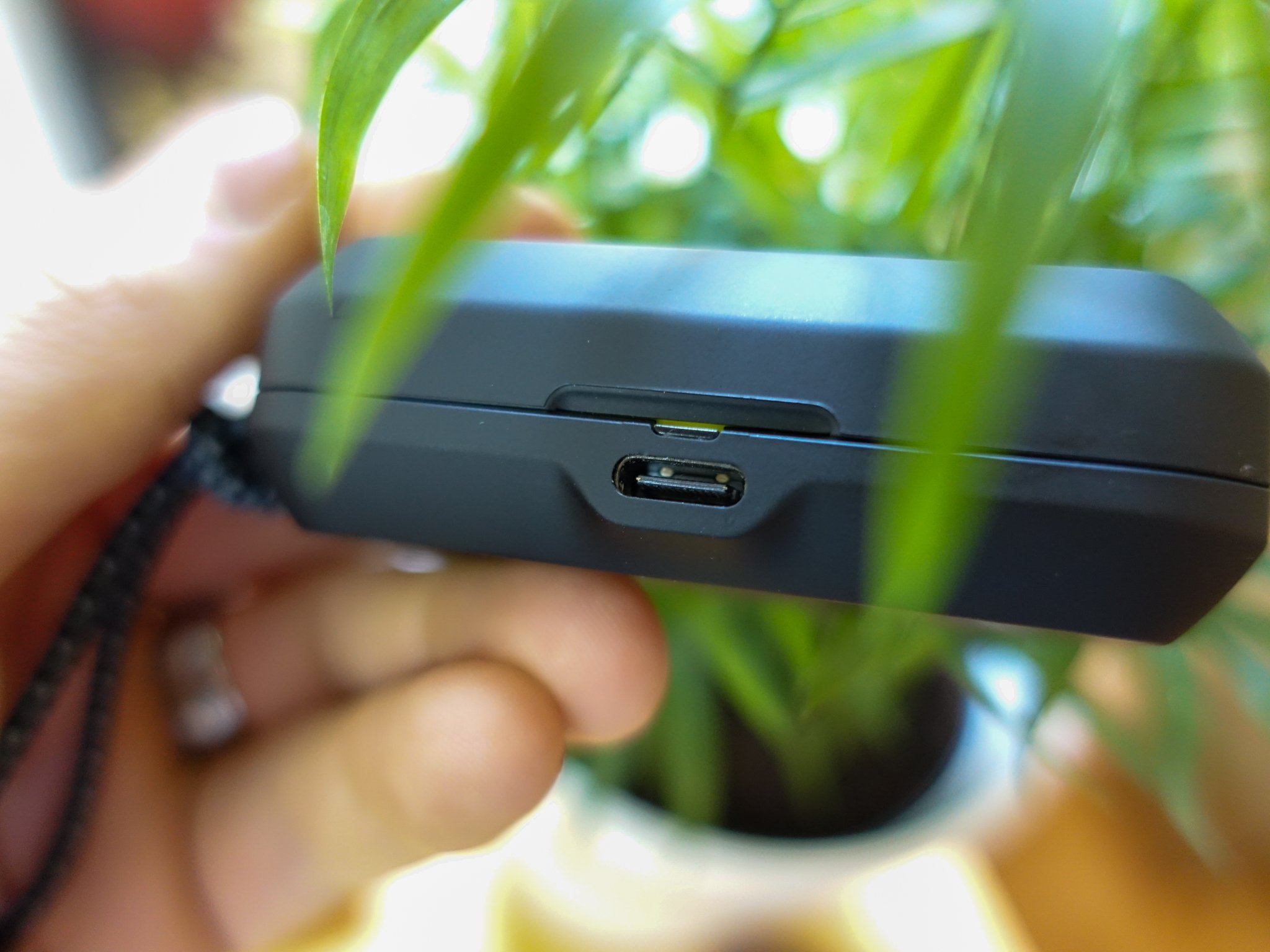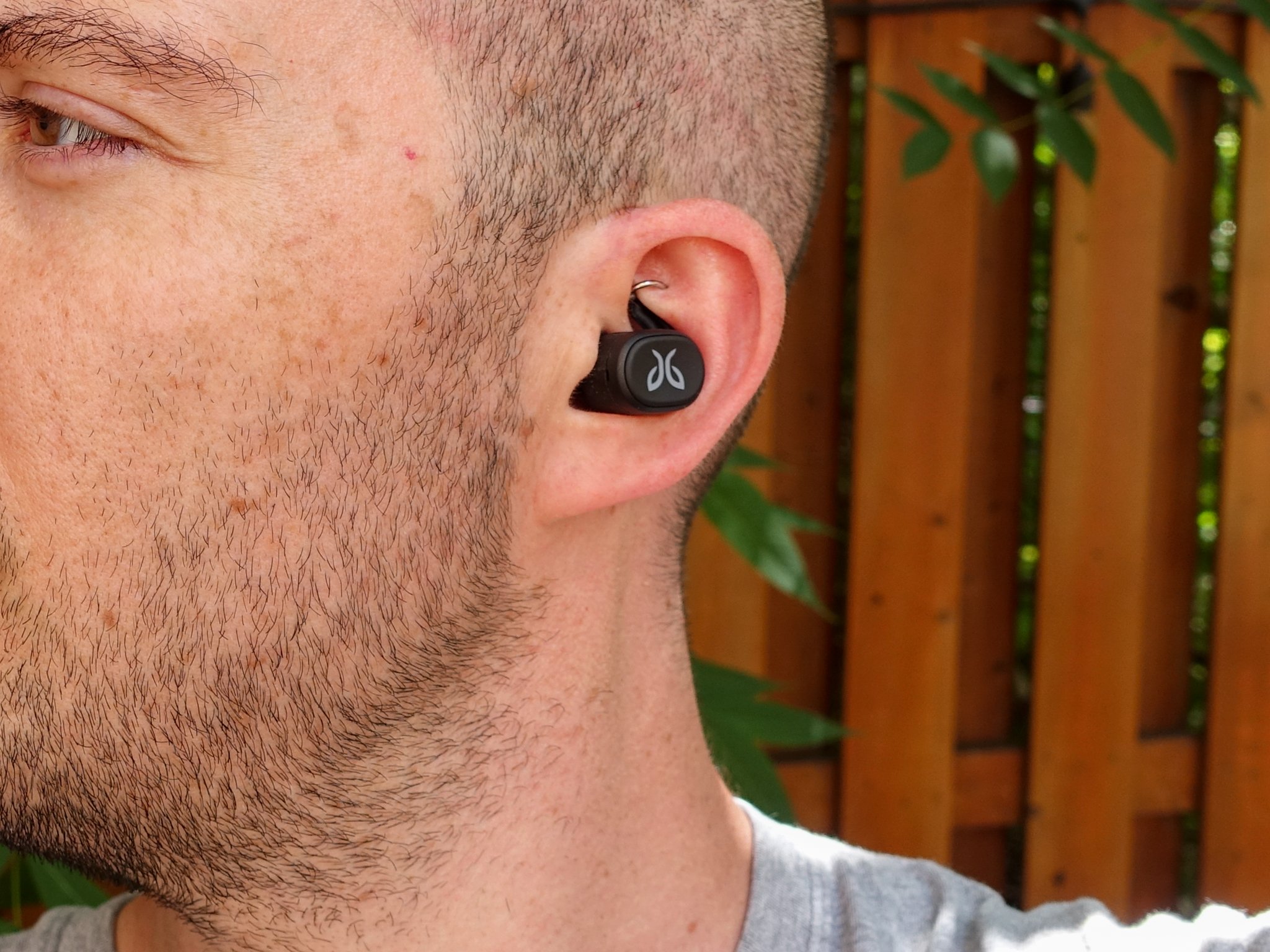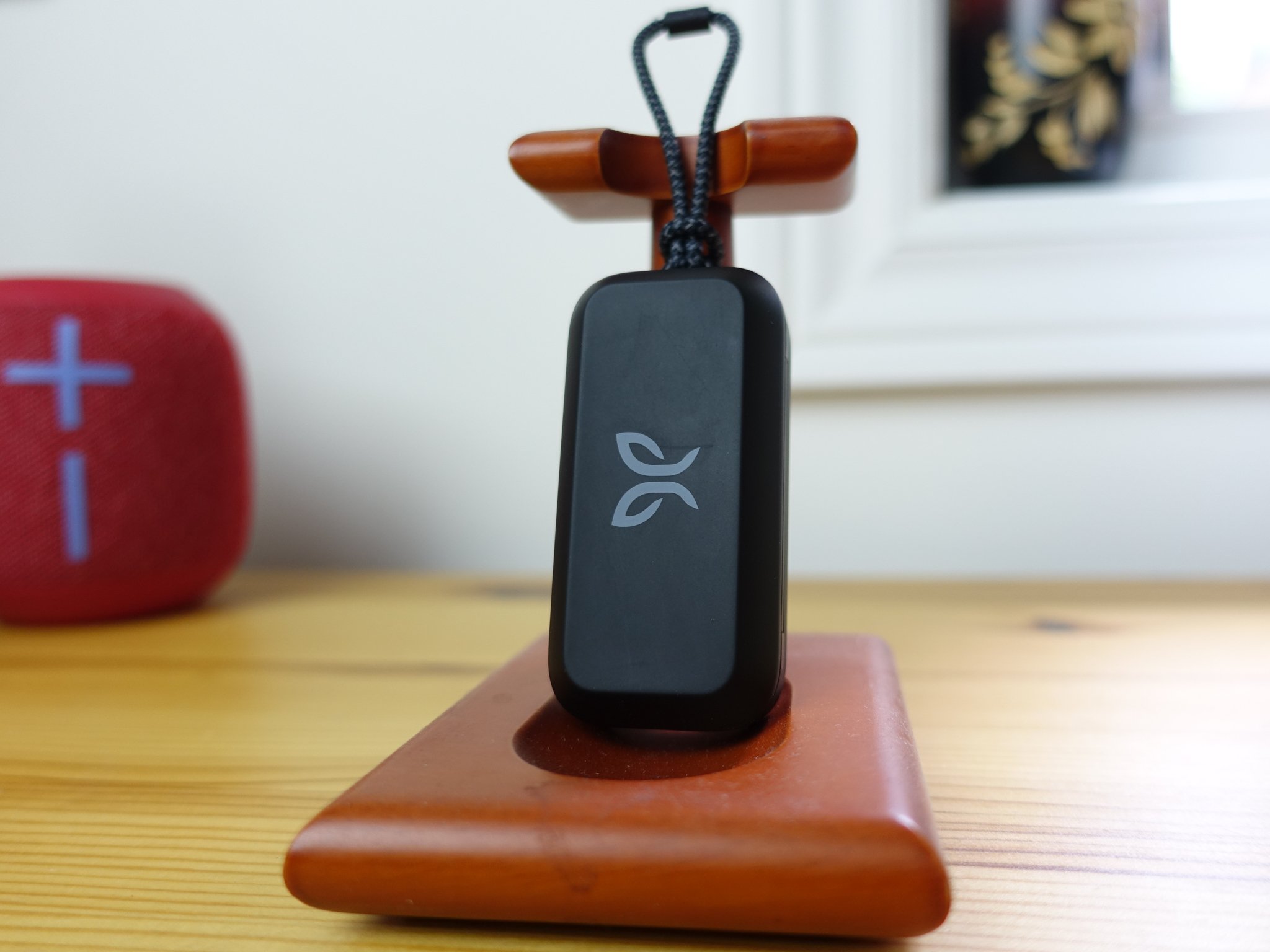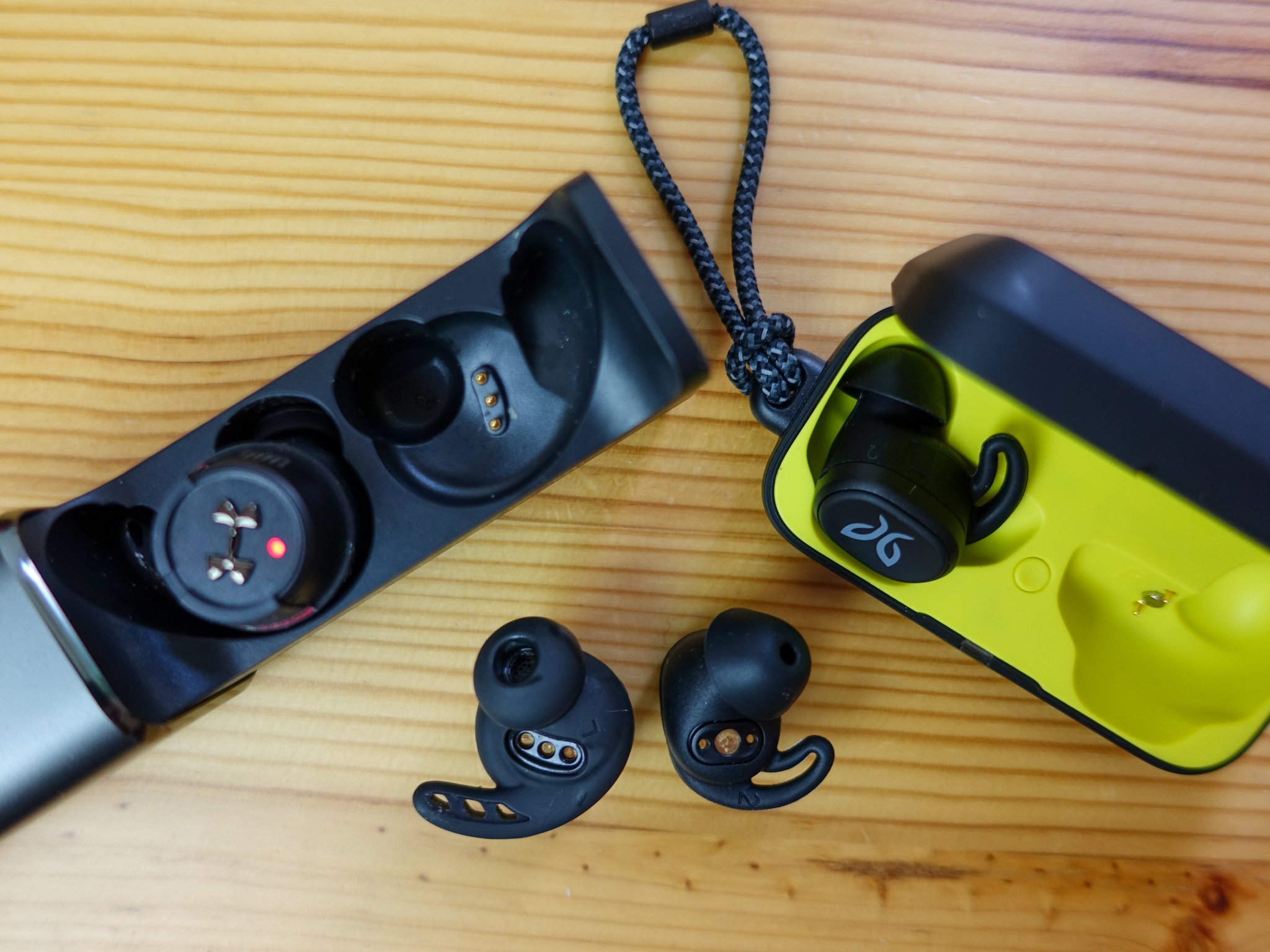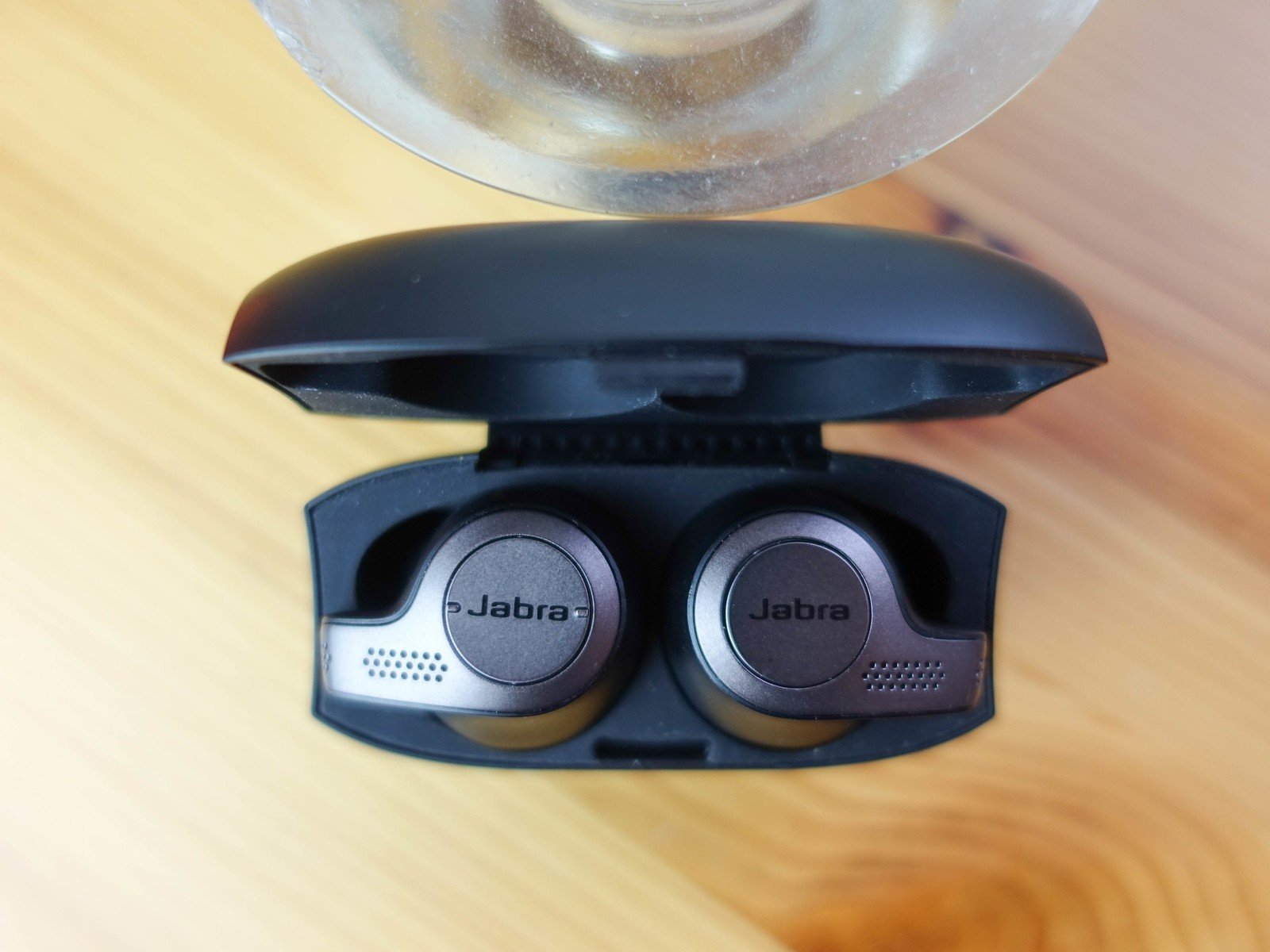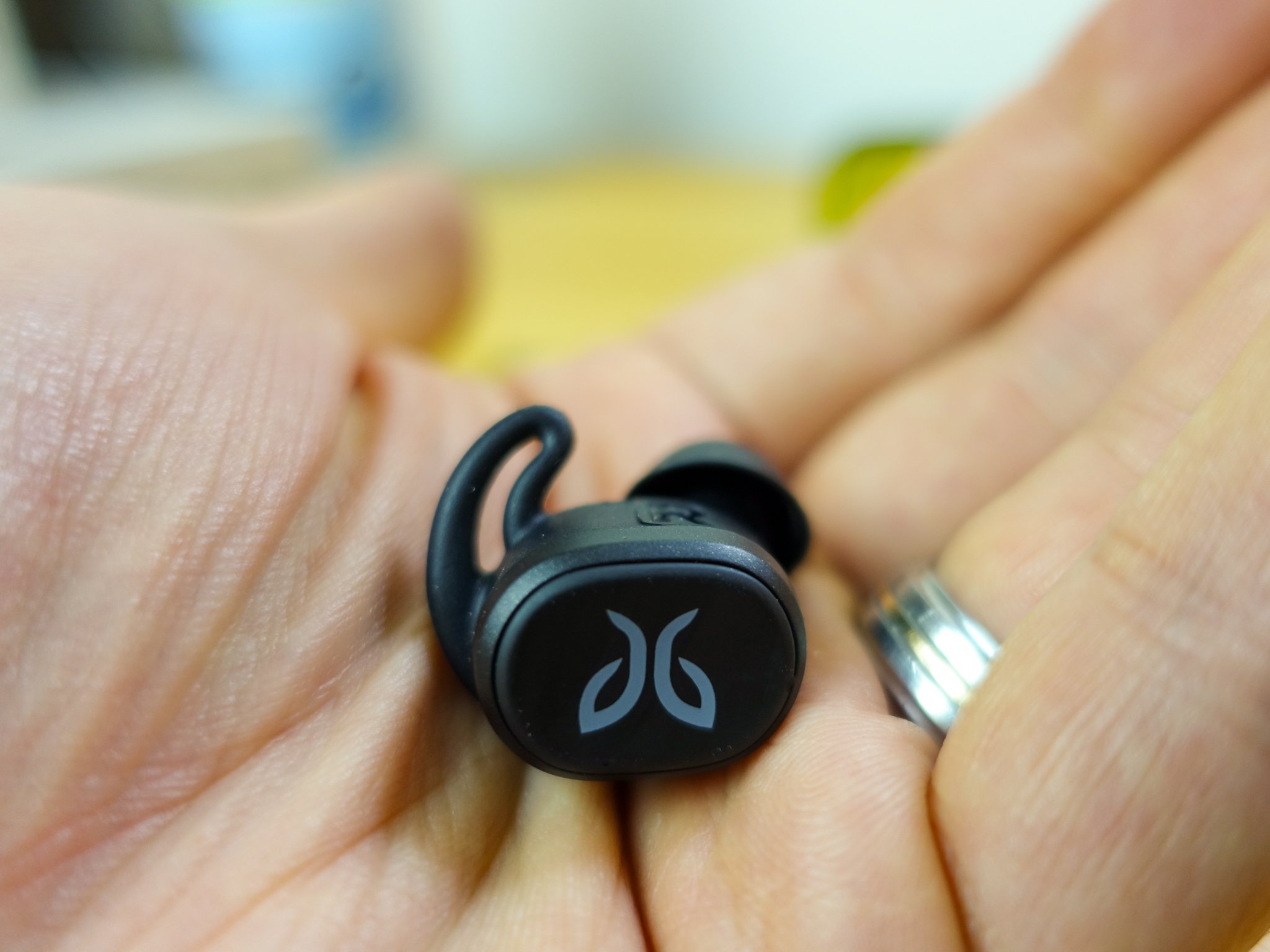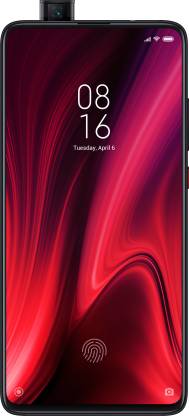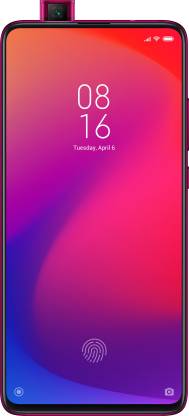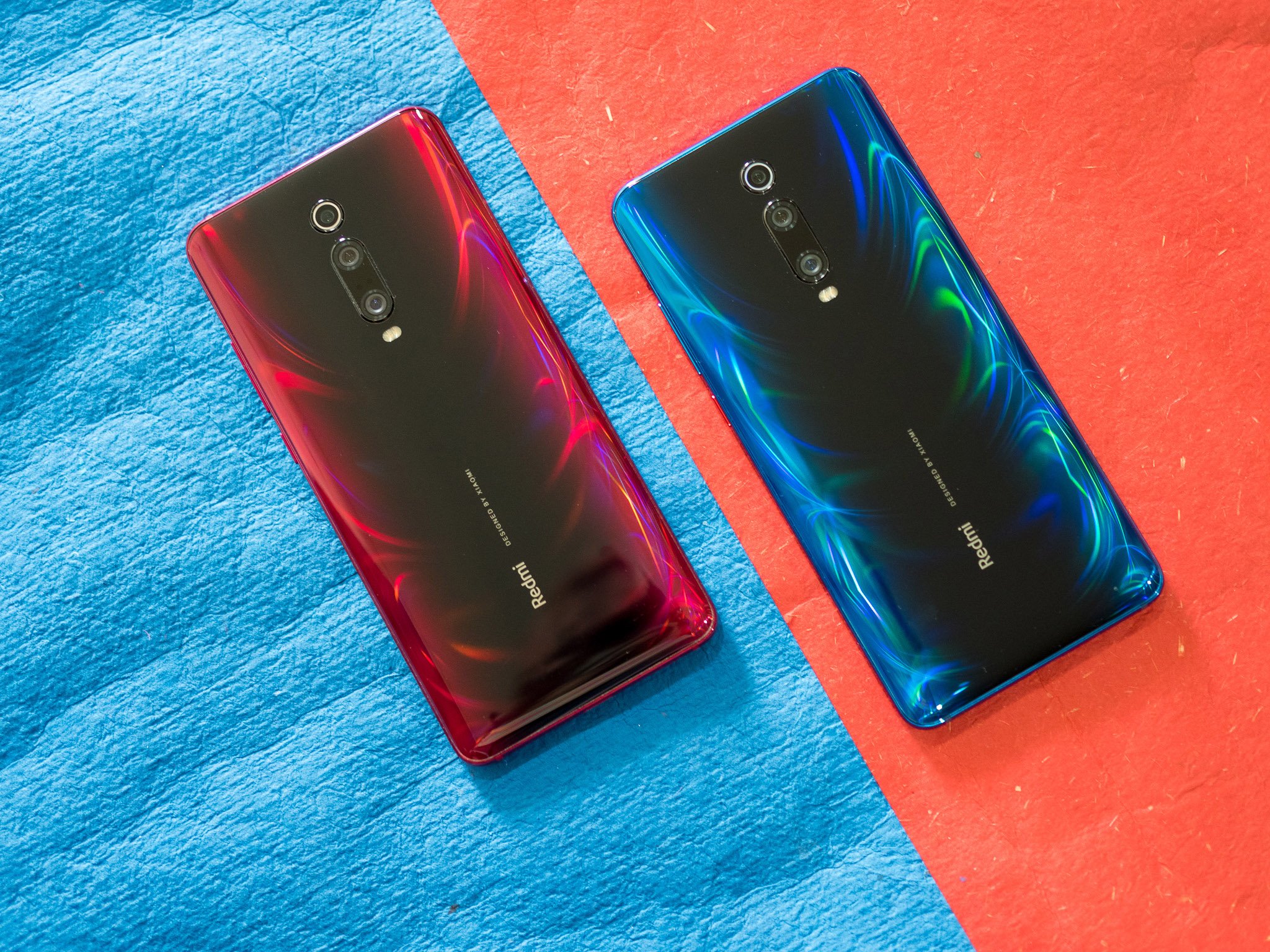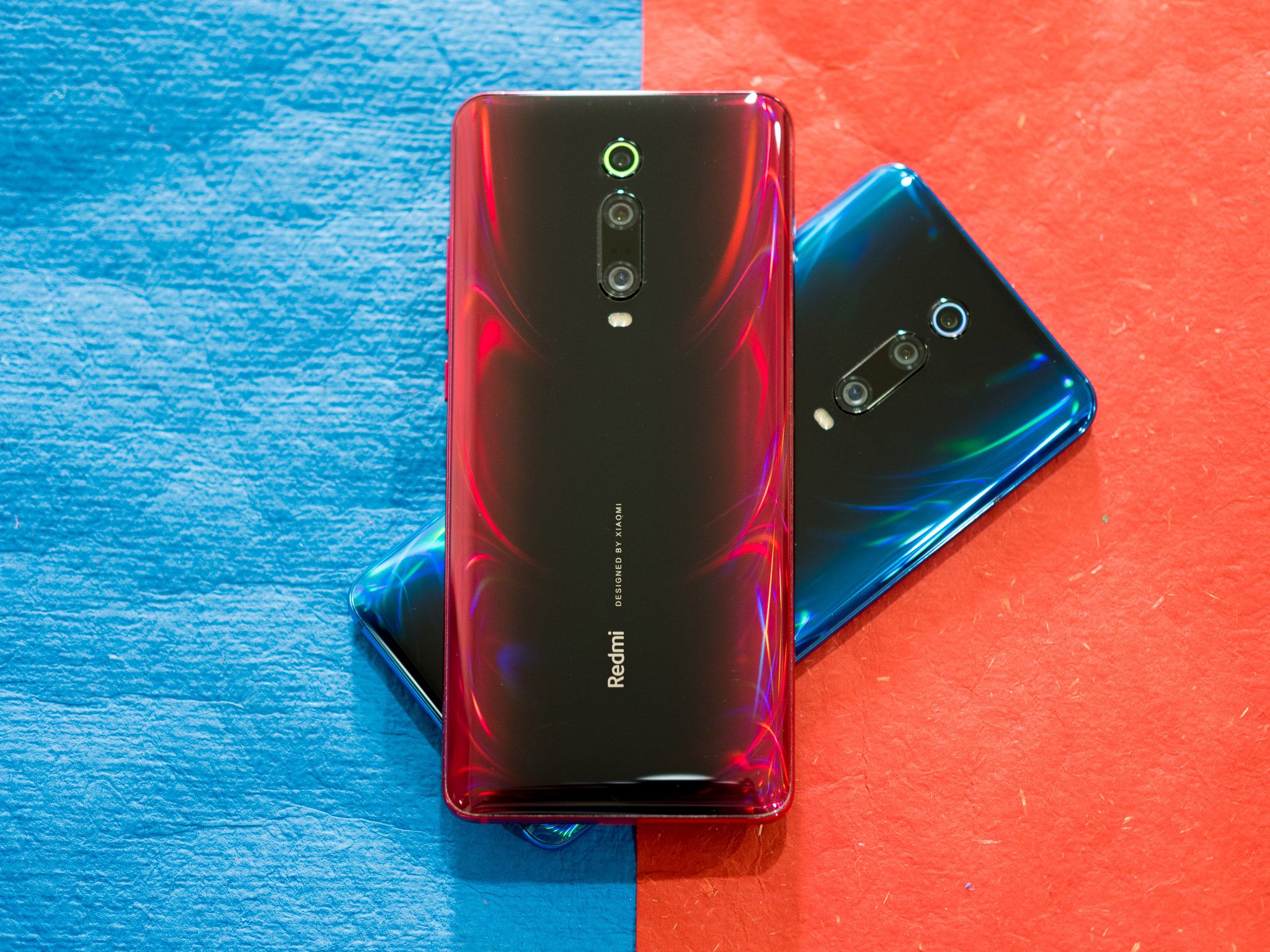Wednesday 31 July 2019
PUBG Mobile Lite: What's It Like to Play the Game on 4 Popular Phones Under Rs. 8,000
Calling all hardware startups! Apply to Hardware Battlefield @ TC Shenzhen
Got hardware? Well then, listen up, because our search continues for boundary-pushing, early-stage hardware startups to join us in Shenzhen, China for an epic opportunity; launch your startup on a global stage and compete in Hardware Battlefield at TC Shenzhen on November 11-12.
Apply here to compete in TC Hardware Battlefield 2019. Why? It’s your chance to demo your product to the top investors and technologists in the world. Hardware Battlefield, cousin to Startup Battlefield, focuses exclusively on innovative hardware because, let’s face it, it’s the backbone of technology. From enterprise solutions to agtech advancements, medical devices to consumer product goods — hardware startups are in the international spotlight.
If you make the cut, you’ll compete against 15 of the world’s most innovative hardware makers for bragging rights, plenty of investor love, media exposure and $25,000 in equity-free cash. Just participating in a Battlefield can change the whole trajectory of your business in the best way possible.
We chose to bring our fifth Hardware Battlefield to Shenzhen because of its outstanding track record of supporting hardware startups. The city achieves this through a combination of accelerators, rapid prototyping and world-class manufacturing. What’s more, TC Hardware Battlefield 2019 takes place as part of the larger TechCrunch Shenzhen that runs November 9-12.
Creativity and innovation no know boundaries, and that’s why we’re opening this competition to any early-stage hardware startup from any country. While we’ve seen amazing hardware in previous Battlefields — like robotic arms, food testing devices, malaria diagnostic tools, smart socks for diabetics and e-motorcycles, we can’t wait to see the next generation of hardware, so bring it on!
Meet the minimum requirements listed below, and we’ll consider your startup:
- Submit your application to TC Hardware Battlefield 2019 by August 14th
- You must have a minimally viable product to demo onstage
- Your product has received little if any, press coverage to date
- Your product must have a hardware device or component
Here’s how Hardware Battlefield works. TechCrunch editors vet every qualified application and pick 15 startups to compete. Those startups receive six rigorous weeks of free coaching. Forget stage fright. You’ll be prepped and ready to step into the spotlight.
Teams have six minutes to pitch and demo their products, which is immediately followed by an in-depth Q&A with the judges. If you make it to the final round, you’ll repeat the process in front of a new set of judges.
The judges will name one outstanding startup the Hardware Battlefield champion. Hoist the Battlefield Cup, claim those bragging rights and the $25,000. This nerve-wracking thrill-ride takes place in front of a live audience, and we capture the entire event on video and post it to our global audience on TechCrunch.
Hardware Battlefield at TC Shenzhen takes place on November 11-12. Don’t hide your hardware or miss your chance to show us — and the entire tech world — your startup magic. Apply to compete in TC Hardware Battlefield 2019, and join us in Shenzhen!
Is your company interested in sponsoring or exhibiting at Hardware Battlefield at TC Shenzhen? Contact our sponsorship sales team by filling out this form.
Leaked images show the Samsung Galaxy Watch Active 2 from all angles

Google testing Play Pass subscription with hundreds of apps and games
Google is looking to take on Apple Arcade with its Play Pass subscription service.
What you need to know
- Google Play Pass is a monthly subscription service that unlocks hundreds of premium apps and games.
- Apps and games in the catalog won't have any ads, with all in-app purchases unlocked.
- The service is currently being tested for $4.99 a month, but the final figure could change.
Evidence of a Play Store subscription service called Play Pass showed up last year, but we haven't heard much after that. The company is now starting to test the monthly subscription service, as spotted by the folks over at Android Police.
Screenshots obtained by the publication show the signup pages for Play Pass, which provides access to hundreds of premium apps and games — with no ads and in-app purchases unlocked — for $4.99 a month, with a 10-day trial:
Explore a curated catalog spanning puzzle games to premium music apps and everything in between. From action hits to puzzles and fitness trackers, with Google Play Pass you unlock access to hundreds of premium apps and games without ads, download fees or in-app purchases.
The blurb mentions premium music apps, so it'll be interesting to see what kind of apps Google bundles with Play Pass. The screenshots show Stardew Valley and Marvel Pinball as being included in the Play Pass catalog, and there's a banner that shows up to try out the service when you're browsing the Play Store listing of an app or game that's in the catalog. Android Police was able to get confirmation from Google that it is testing the subscription service.
It'll be interesting to see if the subscription model works on Android, but in the meantime, would you be willing to try out Play Pass for $4.99 a month? Share your thoughts in the comments below.
OnePlus 7 Pro beats the Google Pixels to the punch with the August security update
For a limited time, you can earn elevated bonuses on Delta Amex cards
Heads up! We share savvy shopping and personal finance tips to put extra cash in your wallet. iMore may receive a commission from The Points Guy Affiliate Network.
These offers have expired
For a limited time (until July 2), you can earn some great bonuses on all three Delta / Amex co-branded cards as well as their business versions. For starters, the entry level card, the Gold Delta SkyMiles® Credit Card from American Express, is offering 60,000 bonus miles after $2,000 in spend in the first three months. Additionally, you would get a $50 statement credit after making a purchase from Delta in those beginning months. Finally, there are no foreign transaction fees and the $95 annual fee is waived in the first year. The business version of the card has all the same perks except the sign up bonus which is 70,000 miles after $4,000 in spend in the first three months.
Entry level
Gold Delta SkyMiles® Credit Card from American Express
In addition to the above perks, you'll get one free checked bag on Delta flights, priority boarding, and 20% off inflight purchases.
The next level up is the Platinum Delta SkyMiles® Credit Card from American Express. The bonus here is 75,000 miles and 5,000 Medallion Qualification Miles (MQMs), which are miles that are earned towards status, after $3,000 in spend. The business version of the card offers 80,000 miles + 5,000 MQMs after $6,000 in spend. Both cards will get you a $100 statement credit in the first 3 months at Delta and an annual companion certificate for travel in main cabin, which means you get to bring a friend on the plane who pays nothing but taxes on the ticket. This companion certificate could save you a lot of money.
Level up
Platinum Delta SkyMiles® Credit Card from American Express
This card comes with a higher annual fee of $195 but also allows you to earn more MQMs towards elite status. You can earn an additional 10,000 MQMs after $25,000 in spend in a calendar year plus another 10,000 MQMs after $50,000 in total annual spend.
Finally, we have the highest tier of Delta co-branded cards. The Delta Reserve® Credit Card from American Express is offering the same bonus as the Consumer Platinum version, but you'll have to spend $5,000 in the first three months as opposed to $3,000. Both Consumer and Business Reserve cards have an annual fee of $450 but also have the most benefits including complementary Delta Sky Club access and an annual companion certificate that can be redeemed in first class.
Premium
Delta Reserve® Credit Card from American Express
Earning MQMs gets even easier with this premium card. Earn 15,000 MQMs and 15,000 regular miles after $30,000 in annual spend. And earn another 15,000 each when you spend $60,000 in a year.
Which Delta to get?
If you're a loyal Delta flyer who is close to achieving status, consider the higher end cards that can nudge you to a new elite tier. On the other hand if you're more economical, the base version offers plenty of bonus miles to fuel several round trip domestic flights.
Check out this bonus offer on the Hawaiian Airlines World Elite Mastercard
Heads up! We share savvy shopping and personal finance tips to put extra cash in your wallet. iMore may receive a commission from The Points Guy Affiliate Network.
Are you looking for an easy way to subsidize your summer vacation to Hawaii? You're in luck. The Hawaiian Airlines® World Elite Mastercard® currently has a limited-time bonus offer of 60,000 miles after spending just $2,000 within the first 90 days of account opening. That's a 20% bump from the previous offer of 50,000 bonus miles. These 60,000 miles are worth $540 based on recent valuations.
Hawaiian getaway
Hawaiian Airlines® World Elite Mastercard®
For an annual fee of just $99 (waived in the first year), this card offers a lot of earning potential, particularly for North American travelers who love to visit Hawaii.
Using the miles
The bonus itself would give you enough miles for a round-trip flight between the contiguous US and Hawaii on Hawaiian Airlines. Alternatively, you could use your miles on the airline's partners, which include: Japan Airlines, JetBlue, Korean Air, Virgin Atlantic and Virgin Australia. Or you could even transfer your miles to Hilton, Caesar's, and points.com.
Earning and benefits
Cardholders will earn triple miles on on Hawaiian Airlines purchases; double miles on gas, dining, and groceries; and one mile per dollar on all other purchases. If you book with your card directly at the airline, you get a free checked bag, which would have otherwise cost you $30 on a flight to/from North America. But perhaps the best perk is a one-time 50% off companion ticket discount plus $100 off a companion ticket every card member anniversary. This is only good for round-trip coach flights to/from North America, but can really help couples or even families who like to visit Hawaii.
Bottom line
Again, if you love to visit Hawaii and do so with at least one other traveler, this card could make a lot of sense for you. Take advantage of the companion discounts and its current elevated sign up bonus.
Wells Fargo Cash Wise offers $150 in cash back and protects your phone
Heads up! We share savvy shopping and personal finance tips to put extra cash in your wallet. iMore may receive a commission from The Points Guy Affiliate Network.
Those who are looking for a new credit card but don't travel much and don't care about hotel status are in luck. There are numerous simple and pure cash back cards that might meet your needs. Today we'll talk about one of those options - the Wells Fargo Cash Wise Visa® Card.
Right now, if you apply and are approved, you will earn a $150 cash rewards bonus after spending just $1,000 in the first three months of account opening. That's a pretty nice 20% return on your first thousand bucks. In addition to the bonus, you will earn a flat 1.5% cash back on all purchases. This might lead many to immediately think about the Chase Freedom Unlimited, which also offers the same flat earning rate. However, there's an elevated cash back rate if you use your Cash Wise card through Google Pay or Apple Pay. Instead of the base 1.5%, you'll enjoy 1.8% on all purchases, an increase in the earnings rate of 20%. However, this elevated rate is only applicable for your first 12 months as a cardholder.
Straight cash
Wells Fargo Cash Wise Visa® Card
This is a card for those who want a simple cash back card with no annual fee and 0% Intro APR for 12 months on purchases and balance transfers. And for a limited, cardholders can enjoy an elevated cash back rate by using Google or Apple Pay.
One additional benefit worth mentioning is cell phone insurance. Cardholders can receive up to $600 in protection on damage or theft of their mobile devices. To be eligible, you must be paying your monthly cellular bill with your Cash Wise card. If you're someone who is prone to dropping your phone, this could be a pretty useful benefit.
Though the Wells Fargo Cash Wise Visa® Card might not wow anyone with its perks, it does offer a decent welcome bonus, good cell phone insurance, and charges no annual fee. If these are benefits that attract you, consider adding this card to your wallet.
United Explorer credit card ups signup bonus by 50%
Heads up! We share savvy shopping and personal finance tips to put extra cash in your wallet. iMore may receive a commission from The Points Guy Affiliate Network.
The tiered welcome bonus is back! Earlier this year, United scrapped the two-tiered bonus structure on its Explorer Card in favor of 40k miles after spending $2,000 in three months. But they've decided to bring it back with an offer that ups the total potential bonus by 50%. Now the United℠ Explorer Card offers a welcome bonus of 40k miles after spending $2,000 in the first 2 months.
As expected from a United-branded card, it comes packed with valuable airline benefits and rewards. Most notably, it gives you and a guest (traveling on the same reservation) a free checked bag (up to $120 savings per roundtrip) and priority boarding privileges. Every cardmember anniversary you'l receive 2 United Club℠ one-time passes (more than $100 value) to help make traveling a bit more relaxing. On top of that, you'll enjoy 25% off inflight purchases and no foreign transaction fees.
Tiered rewards
United℠ Explorer Card
This card lets you earn 2 miles per $1 spent at restaurants, hotel accommodations, and all United purchases. There's no annual fee your first year then it goes to $95. In addition to the previously mentioned travel benefits, you'll also receive a statement credit of up to $100 for either Global Entry or TSA PreCheck application, making it easy to justify the annual fee.
If you earn the full bonus, your 60k miles are estimated to be worth $840. Your best option for redemption will likely be award travel straight from United. Consider their popular Saver Awards which can help you cover short haul domestic flights for as little as 5k miles one way. These flights typically cover 800 miles in the continental US. Or consider splurging for a round trip economy fare from the US to Europe. Depending on your tastes, there are many good ways to redeem your new miles.
Save on summer travel with these huge credit card sign-up offers
Heads up! We share savvy shopping and personal finance tips to put extra cash in your wallet. iMore may receive a commission from The Points Guy Affiliate Network.
Summer travel planning season (at least for the northern hemisphere) is upon us, which means it's time to think about how to get the most out of the money you spend on travel. Of course, new credit cards are one of the best ways to do so, and Delta has just launched some limited time offers on their Amex co-branded cards. From now until April 3, you might qualify for the following offers:
- Gold Delta SkyMiles® Credit Card from American Express - 30,000 Bonus Miles after you use your new Card to make $1,000 in purchases within your first 3 months and a $50 Statement Credit after you make a Delta purchase with your new Card within your first 3 months.
- Platinum Delta SkyMiles® Credit Card from American Express - Earn 5,000 Medallion® Qualification Miles (MQMs) and 35,000 Bonus Miles after you spend $1,000 in purchases on your new Card in your first 3 months. In addition, earn a $100 statement credit after you make a Delta purchase with your new Card within your first 3 months.
- Delta Reserve® Credit Card from American Express - Earn 10,000 Medallion® Qualification Miles (MQMs) and 40,000 Bonus Miles after you spend $3,000 in purchases on your new Card in your first 3 months.
So what can you do with your new batch of SkyMiles? First of all, Delta is known for having frequent flash sales for domestic travel, sometimes with round-trip economy awards starting at 10,000 SkyMiles. With 60,000 miles, an entire family of three could theoretically book 2 round-trip vacations within the US. Or perhaps you want an easy way to take care of your travel to a few summer weddings. Either way, the 60,000 miles and waived first year fee on the Gold card will help you out significantly. To see all current deals, visit Delta's SkyMiles Deals page. In addition to a trove of miles, welcome bonuses for Platinum Delta SkyMiles® Credit Card from American Express and Delta Reserve® Credit Card from American Express also include 5,000 Medallion® Qualification Miles (MQMs) which help you achieve Medallion Status more quickly.
On the topic of international destinations, perhaps you're eager to boost your mileage accounts at SkyTeam partners. Your new SkyMiles will be redeemable on all SkyTeam partners, including Air France and Korean Air.
If you opt for the Platinum card, just remember that you will have an annual fee of $195, and it will not be waived in the first year. However, there are some additional perks that might make the card worth it:
- Receive an annual companion certificate each year after your account renewal. This is good for a free (after taxes/fees) round-trip, main cabin domestic flight. Bring a date to one of those weddings!
- Earn a mileage boost of 10,000 bonus miles and 10,000 bonus MQMs after spending $25,000 in a calendar year. Then earn another 10,000 miles and 10,000 MQMs after spending $50,000 in the same year.
- Purchase Sky Club Access for a discounted $29 per-visit.
- Get your first checked bag free, priority boarding, and 20% in-flight savings. Now you can feel less guilty for buying Wi-Fi onboard to send mid-flight selfies.
If you opt for the Reserve card, you'll be able to get that companion certificate for first class instead of main cabin, and your Sky Club access will be free. However, the annual fee will be a whopping $450, which may not make sense for those who aren't road warriors and Delta loyalists. The true value of the Reserve card is the ability to waive the Medallion Qualifying Dollars (MQD) requirement for Diamond Medallion status, Delta's highest level. However, to achieve that waiver, you'll have to spend a crazy $250,000 in a calendar year. Count me out.
If you're like me, you're mostly interested in the sign on bonus. In that case, I'd recommend the Gold version. It's a great way to boost your SkyMiles account without an upfront fee. In a year's time, you can decide if priority boarding and a free checked bag are worth $95.
Barclaycard Arrival offers largest bonus offer to date
Heads up! We share savvy shopping and personal finance tips to put extra cash in your wallet. iMore may receive a commission from The Points Guy Affiliate Network.
While it doesn't get as much hype as other travel cards such as the Chase Sapphire Preferred, the Barclaycard Arrival® Plus World Elite Mastercard® deserves recognition for keeping it simple. Each transaction on the Arrival Plus earns 2x miles or 2% back, so you don't have to do any mental calculation based on the product you purchase. Additionally, on top of redeemed miles, you will also receive a 5% rebate on redeemed miles, which ups your effective return to 2.1%. Now that the card is also offering its highest ever 70,000 miles bonus signup, it may be time to add it to your wallet.
Mile high
Barclaycard Arrival® Plus World Elite Mastercard®
The Arrival Plus allows a wide range of travel products for you to redeem your miles on, which includes airlines, hotels, campgrounds, car rentals, cruise lines, and more. And with no foreign transaction fee, this card makes the perfect travel companion.
To obtain the 70,000 bonus, make sure you spend $5,000 on the card in the first 90 days of opening. It's a steep spending requirement but most premium cards have a similar threshold. Additionally, the Barclay Arrival Plus will come with an $89 annual fee, though it is waived the first year.
Still, the welcome bonus is very generous, and after obtaining your miles, you redeem through the rewards portal Barclays provides on its website. You can redeem for travel, gift cards, and merchandise, but the best value comes from travel statement credits. These credits begin at 10,000 miles for $100 and can only be used towards purchases made in the last 120 days. Luckily, as mentioned above, the scope of purchases that fall under Barclays definition of travel is wide. Then after making your selection, your 5% mileage refund should appear credited back into your account in one business day! All in all, we appreciate the Arrival card's simplicity and wide coverage of travel-related purchases. If you regularly make purchases that don't earn bonus points from your current credit cards, the Arrival Plus could be a good addition.
New research report about the 2019 Apple iPhones would make Steve Jobs say "Yuck!"

Exclusive: Google now testing 'Play Pass' app and game subscription service
Earlier this year, Apple announced Apple Arcade, a monthly subscription service that gives you access to a library of mobile games (including some exclusive titles) on iOS devices. The service isn't live yet, but Google is already testing its own competing service, named Play Pass.
XDA Developers found evidence last year that Google was working on the Play Pass service, but now the company is starting to test it. We received the below screenshots from reader Dustin, which show the signup page for Play Pass and the $4.99 monthly cost.
Read MoreExclusive: Google now testing 'Play Pass' app and game subscription service was written by the awesome team at Android Police.
Google Project Zero Researchers Disclose 5 ‘Zero Interaction’ iMessage Flaws, 4 Fixed in iOS 12.4
iOS 13 Beta Allows iPad Users to Resize App Icons With Different Home Screen Grid Layouts
Truecaller Found Signing Up Users for Its Payments Service Without Permission in India, Company Blames a Bug
Amazon Said to Be Launching Online Food Delivery Service in India to Rival Swiggy, Zomato
Nintendo Sells 2.1 Million Switch Consoles in Q2, Sees Profit Drop
Qualcomm, Tencent Agree to Collaborate on Gaming Devices, 5G
WhatsApp Multi-Platform System Confirmed, Will Allow Same Account to Run on Many Devices: WABetaInfo
Uber Lays Off 400 Employees From Its Global Marketing Team to Reduce Costs
WhatsApp iOS Beta Starts Testing Quick Media Edit Feature, Multi-Platform System Rumoured
Apple Admits a Small Portion of Siri Recordings Are Heard by Humans
Jaybird's new Vista true wireless earbuds last for 6 hours and charge over USB-C
Jaybird was one of the first companies to popularize the true wireless earbud form factor, but its Run and Run XT products weren't without their fair share of issues. These new Vista models will hope to right the wrongs of their predecessors, offering a smaller/lighter design, better battery life, and a USB Type-C port for charging.
As before, these earbuds are intended for use during running and other types of exercise.
Read MoreJaybird's new Vista true wireless earbuds last for 6 hours and charge over USB-C was written by the awesome team at Android Police.
Samsung eyeing Galaxy Note 10, A series success in wake of earnings slump
Samsung has announced its Q2 2019 earnings, revealing a 55.6 percent year-on-year drop in operating profits. In the report Samsung published yesterday, the company said it was looking to the Galaxy Note 10, Galaxy Fold, and the Galaxy A series to help boost its profits in the second half of the year.
Samsung’s operating profit in Q2 2019 came in at 6.60 trillion won (~$5.6 billion), compared to the 14.87 trillion won (~$12.58 billion) operating profit it reported in Q2 2018.
It’s a significant drop, which Samsung largely attributed to, “The weakness and price declines in the memory chip market.” For context, the company’s chip business usually earns about twice as much as its consumer electronics division.
Samsung also noted “slower sales of flagship models and increased marketing expenses,” despite strong overall shipments. Its postponement of the Galaxy Fold release, which was originally scheduled for Q2, also may have harmed its revenues (though the company didn’t suggest this in its guidance).
Samsung’s revenue saw a smaller decline than its operating profits did at a four percent drop. Samsung posted 56.13 trillion won revenue last quarter, compared to 58.48 trillion won revenue in Q2 2018.
What’s Samsung’s outlook for the rest of 2019?
Samsung foresees economy and trade “uncertainties” affecting a number of areas of its business throughout the rest of 2019. This likely refers to the Japan/South Korea trade situation, and it means Samsung may continue to see a quarterly drop in revenues compared to recent years. However, one area where Samsung is more optimistic about the rest of the year is with the release of new smartphones.
“In the third quarter, Samsung will focus on successful launches of new innovative products – the Galaxy Note 10 and Galaxy Fold,” said Samsung in its report. “It will enhance the 5G smartphone lineup to take the lead in the new market and introduce more competitive A series models in the second half to extend the ongoing positive momentum in mass market smartphone sales.”
According to The Investor, Samsung also believes the Galaxy Note 10 sales will surpass those of the Galaxy Note 9.
Samsung remained the biggest smartphone vendor by shipments in Q2 2019, but sales of the Galaxy Note 10, and especially the Galaxy Fold, are by no means guaranteed. The Galaxy Fold is among the most expensive smartphones Samsung has ever produced at nearly $2000, while the flagship Galaxy Note 10 may struggle to compete with recent high-quality midrange Androids. Want to learn more about those? Head to our best flagship killers coverage.
Google Pay adds support for 25 more banks across Europe, Asia, and Australia
I'm a huge fan of mobile payments, mostly because it's convenient and I don't have to take my wallet with me to run small errands. Seeing Google Pay expand to more countries is always pleasant, especially when the services added include prepaid cards in addition to traditional banks. The list of supported services has further grown since our last post, as Google Pay now supports 25 more services in 14 countries in Europe, Asia, and Australia.
Read MoreGoogle Pay adds support for 25 more banks across Europe, Asia, and Australia was written by the awesome team at Android Police.
Samsung's Q2 2019 profit falls by a staggering 56% after weak memory demand
Analysts expect the memory chip market to recover only in the second half of 2020.
What you need to know
- Samsung's Q2 2019 profit was 56% lower compared to the same period last year.
- Drop in demand of memory chips is a major reason behind the massive drop.
- The company plans to enhance its 5G lineup and introduce more A series phones in the second half of the year.
Samsung, which is currently the world's largest maker of memory chips, has been severely hit by a major decline in the chip market. In its Q2 2019 earnings, the company posted an operating profit of $5.6 billion (6.6 trillion won), which is down by a whopping 56% compared to last year. Consolidated revenue came in at $47.4 billion (56.13 trillion won).
Compared to the first quarter of the year, however, both revenue and operating profit have gone up. Weakness in the memory market was the primary reasons behind the massive plunge. Samsung expects demand for memory chips to grow in the second half of the year but warns volatility in the market is likely to continue.
Samsung's mobile business posted consolidated revenue of $21.86 billion (25.86 trillion won) and operating profit of $1.32 billion (1.56 trillion won) for the quarter. Even though the global smartphone market saw demand decline during the quarter, Samsung's smartphone shipments increased over the previous partner, driven by the success of new Galaxy A series phones such as the Galaxy A50 and A70. However, sales of its flagship Galaxy S10 fell compared to Q1, apparently due to stagnant demand for premium products in the market.
In the third quarter, Samsung says it will focus on launch of the "innovative" Galaxy Note 10 and Galaxy Fold, expanding its 5G smartphone lineup. Buoyed by the success of its latest Galaxy A series phones, the company will be introduce more competitive A series phones to help boost shipments.
The consumer electronics division did quite well in the second quarter, posting $9.36 billion (11.07 trillion won) in consolidated revenue. Samsung is planning to maximize end-year sales of large-screen TVs by "positioning QLED 8K TVs as mainstream TVs." It will also focus on lifestyle products such as Bespoke refrigerators and AirDressers in the second half of the year.
Get More Galaxy S10
Samsung Galaxy S10
Galaxy S10 From $800 at Amazon Galaxy S10+ From $900 at Amazon Galaxy S10e From $650 at Amazon
The LG Stylo 5 can be yours for free or at a cool 20 percent discount from Boost
 Commercially released on its first US carrier about a month ago, the mid-range LG Stylo 5 expanded pretty quickly to Boost Mobile, Sprint, and Metro by T-Mobile. Still unavailable in an unlocked variant, the pen-wielding 6.2-incher can be had free of charge from not one but two wireless service providers right now, as Boost is essentially matching Metro's introductory deal on this very interesting smartphone for new subscribers.
Commercially released on its first US carrier about a month ago, the mid-range LG Stylo 5 expanded pretty quickly to Boost Mobile, Sprint, and Metro by T-Mobile. Still unavailable in an unlocked variant, the pen-wielding 6.2-incher can be had free of charge from not one but two wireless service providers right now, as Boost is essentially matching Metro's introductory deal on this very interesting smartphone for new subscribers.
Electronic Arts Posts Strong Q2 Results on Apex Legends, Sims 4, FIFA Ultimate Team
Samsung reports $5.6 billion profit, preps an onslaught of new A-series phones
 With rapid restructuring of both its corporate organization and product lines, Samsung managed to turn the ship around, and stabilize its sales and profits that were heading downwards after the flagship smartphone market started maturing about two years ago.
With rapid restructuring of both its corporate organization and product lines, Samsung managed to turn the ship around, and stabilize its sales and profits that were heading downwards after the flagship smartphone market started maturing about two years ago.
Man Didn’t Want a ‘Non-Hindu Rider’ to Deliver His Food, This Is How Zomato Responded
Google Chrome 76 now available, makes it easier to get around paywalls
Chrome 76 is now out for Android, Mac, Windows, and Linux users, and is coming to Chrome OS on August 6.
What you need to know
- Chrome 76 is now available for Android, Mac, Windows, and Linux users.
- The latest version of Chrome browser blocks Flash by default and makes it easier to bypass paywalls.
- There are multiple Progressive Web Apps improvements as well.
Google has finally released the stable version of Chrome 76 for Android, Windows, Mac, Linux, and iOS platforms. The latest version of Chrome comes with several major improvements and new features. Adobe Flash is now blocked by default, which means you will need to head over to settings to use it. The other major highlight is that Chrome 76 makes it impossible for websites to tell if a user is in Incognito Mode.
Websites were previously able to detect if someone was using Incognito Mode thanks to the way Chrome implemented the FileSystem API, with the help of "detect private mode" scripts. Since Chrome 76 fixes the flaw, websites will no longer be able to force readers to sign up for a subscription after viewing a fixed number of free articles. Needless to say, this is likely to affect major news publications that put their content behind a paywall.
After you update to Chrome 76, you will notice that Adobe Flash is now turned off by default. If you wish to use Flash, you will need to manually enable to feature by going to chrome://settings/content/flash. Once you enable it, you will see the familiar "Ask first" option pop up when you visit a website with Flash content.
Additionally, the Dark Mode feature has been improved with the addition of prefers-color-scheme media query, which will allow websites to enable dark mode automatically to match the user's preferred mode. It is also going to be easier to install Progressive Web Apps (PWAs) on desktop, thanks to the new install button added to the address bar. On Android, Chrome will now check if a web app manifest has changed every day instead of every three days.
Jaybird Vista review: Running on air
The 'Vista' brand should be beyond repair, damaged by an operating system few miss (and fewer used). So it was surprising that the name's audacious revival should come from none other than Jaybird, whose Run, Tarah and X-series earbuds have been favorites of the running class for many years.
Jaybird's Vista earbuds are truly wireless, which means like the Run and Run XT before it, and popularized by Apple's AirPods, they are not connected by wires. It also means they can be used independently. But unlike the Run series, Vista is incredibly light and conveniently magnetic. And unlike the AirPods, they actually sound great.
At $180, they're not cheap, but they're also pretty compelling for the right kind of person. Are you that person? Let's find out.
Lightweight, deep bass
Jaybird Vista Truly Wireless Sport Headphones
Jaybird goes mainstream
While the Vista truly wireless headphones are being marketed to runners and athletes, they're easily some of the most comfortable, portable and best-sounding earbuds I've worn to date. Certain features common in other earbuds are missing here, but they don't detract too much from the overall experience.
The Good
- Lightweight and super portable
- Fun, bass-heavy sound with right seal
- IPX7 waterproof, rare on truly wireless earbuds
- Decent battery life, plus quick charging via USB-C
- Easy to clean
The Bad
- No auto-pause or "hear-through" feature
- Default sound profile very bass-heavy
- Expensive
- Only supports SBC codec
- Low maximum volume
Jaybird Vista What sounds good
Where the Jaybird Run and its sequel, Run XT, were bulky and awkward, Vista is light — almost too light — and simple to use. Like all other truly wireless earbuds, they sit comfortably in a charging case that provides additional battery — in this case, an extra 10 hours to augment the six hours built into each bud — and latch closed with a satisfying magnetic snap.
When I say Vista is light, I mean all of it: each bud weighs just six grams, and the case is a svelte 45g. While the case, which charges via USB-C and has an external charging LED and an internal Bluetooth connectivity button and LED, is slightly longer than the AirPods case, the whole kit doesn't feel any less convenient to travel around with. The case I'd been stuffing into my pockets for the past few months, Jabra's Elite 65t, feels almost bulbous in comparison.
Thankfully, Jabra's employed strong magnets to latch the buds to the case when they're not in use; even a forceful upside-down shake won't dislodge them. Being sports-focused, the earbuds can withstand being completely immersed in water, but the more important metric is that they're not going to wear down from the inevitable prodigious amounts of sweat making contact with the plastic body and silicon ear tips.
There are three tip sizes in the box, but that doesn't really tell the whole story; they are relatively rigid, and wrap round the bud's body like a sheath, snapping into place when correctly installed. The default size, middle number two, were perfect for my ears — in fact, the Vista earbuds are more comfortable than any previous Jaybird headphones I've worn.
They sound pretty good, too. The default profile is very bass-heavy, at least to my bass-friendly ears — think quantity over quality in this regard — but Jaybird's Personal EQ feature, easy to access in the Android or iOS app, tames some of that bloated low-end. Once properly equalized, Vista sounds quite good for a pair of truly wireless earbuds; they're tuned for punchy rock or hip-hop, so don't expect tight treble or a super-wide soundstage, but the sound isn't fatiguing. They sound about on par with the Jaybird X4s, though the company says the 6mm drivers are brand new for this product.
The Jaybird Vistas are comfortable, lightweight and fun to wear, and they sound better than their tiny size would suggest.
With the redesign, Jaybird's also modernizing some of the more finicky aspects of the Run series; there's no longer a master/companion relationship between the two earbuds, so either can be used completely independently. As a result, the single button on each base is by default configured to perform the same things — single press for play/pause, double press for next track, triple press for previous track, and long press for power off. The taps can be reconfigured for Google Assistant or to adjust volume, but you'll need to dig into the app for that.
Graciously, the new platform comes with major improvements to connection quality and latency; unlike with the Run, which I had to shelve almost immediately after my review due to lingering connectivity issues, Vista is just plain solid. No dropouts, no garbling, no latency while watching video. It connects to the previous device every time and stays connected. This is the experience I want from a pair of truly wireless earbuds.
Jaybird advertises six hours of battery life per bud, plus an extra 10 hours from the case. I got close to that twice in my testing, around five hours and 45 minutes the first time and just over five and a half hours the second time. While the case lacks wireless charging, I'm pretty happy with the 16-hour combined uptime and USB C-based fast charging, which offers an hour of listening with a five-minute top-up.
I'm also pretty happy with the fact that, while running, neither Vista earbud budges. They stay put thanks to a thoughtful design that offers decent amounts of passive noise cancelation and an ear fin that keeps the bud in place. That I can simply run the earbud under a stream of water after a workout to clean it, too, is a bonus.
Jaybird Vista What sounds off
Jaybird did a lot of things right with the Vista earbuds, but in its quest to keep size down and complexity low, it eschewed a bunch of features I grew used to on other products like the Jabra Elite 65t. For starters, it doesn't auto-pause when removed from the ear, because there's no proximity sensor on board. That means when you inevitably have to remove one of the buds to talk to someone, you have to remember to pause the music beforehand.
Jaybird decided to forgo extra features, like auto-pause or an ambient mode, to keep size and weight down.
And unlike competitors like the Galaxy Buds and aforementioned Jabras, Jaybird didn't include a "hear-through" feature that utilizes the microphone in each ear to pump in outside sound and avoid having the remove the earbud in the first place. Considering the amount of passive isolation these things provide, I'm not happy with these omissions.
Similarly, the headphones only support the legacy SBC Bluetooth audio codec, so forget about higher-bandwidth options like AAC and aptX. This obviously affects sound quality, though perhaps not enough that the average person will notice, especially while listening to low-bandwidth streaming music.
I'm also not enamored of the mediocre microphone quality on the Vista; I wasn't expecting active noise cancelation in a pair of truly wireless earbuds this small, but call recipients complained of distracting amounts of background noise, even when I was in a relatively quiet environment.
Finally, the current firmware has a maximum volume level that's quite a bit lower than most of Vista's competitors. While Jaybird assured me the issue will be corrected in an upcoming software update, I find myself having to maximize the volume on both the phone and the buds just to listen at comfortable levels outdoors. (I made sure the problem wasn't my phone as I got the same result on the Huawei P30 Pro, Pixel 3a, iPhone XS and Galaxy S10.)
The competition Jabra Beats Bose
No product in this category sits alone in 2019, so it's worth going over some of Jaybird's competition. While the Run series is being discontinued, Jaybird's other wrap-around headphones offer virtually the same sound quality, comfort and ruggedness at much lower costs; the excellent X4 headphones are down to just $100 right now. The more luxurious Tarah Pros are even $20 cheaper than the Vista at $160.
Still, nothing beats the actual freedom of truly wireless headphones, which is why it's worth talking about Under Armour's JBL True Wireless Flash headphones. They're similarly IPX7 rated and, at $170, identically priced, but they're much bigger and heavier, and charge via Micro-USB. Still, they sound fuller and richer than Jaybird's offering, and have bass that's both smoother and more accurate, and they offer ambient passthrough.
I've mentioned Jabra's Elite 65t truly wireless earbuds a number of times in this review because until now they've been my go-to choice for city-street listening. With an IP55 rating, they're not as secure against water and sweat as the Vistas, but they can withstand a rainstorm, and I prefer their sound profile. They charge with Micro-USB, though, which is why I made keep using the Jaybirds as my daily drivers for the foreseeable future.
Other competitors in the space that can't be ignored: Bose's well-received but expensive and aging SoundSport Free. At $200, I wouldn't recommend them anymore; they're heavy and obnoxiously big, and are coming up on two years old so they lack a lot of the amenities that come with newer headphones. I would recommend taking a look at Beats' new PowerBeats Pro, though: despite costing $250, they have incredible sound, nearly twice the battery life of the Jaybird Vistas, and come with secure earhooks to ensure a good fit. But $250 is $80 more than the Vistas, and I really don't think you're getting that much more in value.
Jaybird Vista Should you buy them?
At $180, Vista is Jaybird's most expensive and most mainstream product. You're getting comfortable, great-sounding earbuds with awesome battery life and solid connectivity that are also waterproof and live in a relatively tiny case. What's missing is annoying more than devastating.
If you can justify the cost, the Vistas are easy to love and even easier to slip in a pocket. You don't have to be a runner to enjoy them, but if you are one they'll probably last you a long time.
Lightweight, deep bass
Jaybird Vista Truly Wireless Sport Headphones
Jaybird goes mainstream
While the Vista truly wireless headphones are being marketed to runners and athletes, they're easily some of the most comfortable, portable and best-sounding earbuds I've worn to date. Certain features common in other earbuds are missing here, but they don't detract too much from the overall experience.
Tuesday 30 July 2019
Redmi K20 Pro vs. Redmi K20: Which should you buy?
Xiaomi has two great options if you're in the market for a value flagship in 2019. We've used both devices extensively, and are here to assist you in your purchasing decision.
Redmi K20 Pro
The default choice
Pros
- Outstanding value
- Two-day battery life
- Gorgeous design
- Snapdragon 855 platform
- 3.5mm jack and AptX HD
Cons
- Limited availability
- Notification LED isn't useful
- No NFC
The Redmi K20 Pro is one of the best value flagships of 2019. It has all the bells and whistles — there's a Snapdragon 855 under the hood, it has a retractable module for the front camera, and you get a 4000mAh battery that lasts for two days. All that hardware is backed by a gorgeous design with an aggressive gradient effect at the back, leading to a device that just gets everything right.
Redmi K20
More accessible
Pros
- Same great design as K20 Pro
- 48MP primary sensor
- Two-day battery life
- 3.5mm jack and AptX HD
- Decent hardware
Cons
- Availability issues
- Same issues with notification LED
- 4K video limited to 30fps
- No NFC
The Redmi K20 shares a lot of the same hardware as the K20 Pro: you get the same stunning design, AMOLED display, retractable camera module, 4000mAh battery, and the same 48MP Sony IMX586 sensor at the back. The only major difference is that the device is powered by the Snapdragon 730 and not the Snapdragon 855, and the base variant has 64GB of internal storage.
Xiaomi knows how to make a solid value flagship, and this year it is offering two enticing options in the Redmi K20 Pro and K20. Both phones share a lot of the same hardware and have the same gradient design, with a few key differences. Here's what you need to know about what's on offer, and the best option for your needs.
Two great phones with a few key differences
At first glance, it's hard to make out any differences between the Redmi K20 and K20 Pro: both phones have the same design, and they share a lot of the same hardware. Xiaomi is differentiating the devices based on the chipset — the Redmi K20 Pro gets the flagship Snapdragon 855, with the standard K20 picking up the Snapdragon 730. In fact, the Redmi K20 is one of the first devices to be powered by the Snapdragon 730, which has cores derived from the Cortex A76 — the same as the Snapdragon 855.
Both phones have the same design and share a lot of the internal specs — with the Snapdragon chipset being the differentiator.
The key difference between the two chipsets is down to the GPU. You get the Adreno 640 on the Snapdragon 855, with the Snapdragon 730 featuring the Adreno 618. The Adreno 640 is one of the fastest mobile GPUs around, cruising through any Android game in the market today. The Snapdragon 730 platform bridges the gap to the Snapdragon 855, but if you want the latest hardware available today, you're better off picking up the K20 Pro.
That said, the Snapdragon 730 is no slouch. I didn't see any slowdowns in the two weeks I used the standard K20, and the device is just as capable of playing most games. The Snapdragon 855 just has that little bit extra, allowing it to stand out.
Other than that, both phones are identical. You get the same metal-and-glass design on both phones, and they're also available in the same color options: Carbon Black, Flame Red, and Glacier Blue. That means you get the same stunning gradient effect on either device. Heck, they have the same dimensions and weight, so that should give you an indication as to how much both devices have in common.
Both devices also have notchless displays thanks to retractable modules for the front cameras, and they're both rocking the same 6.39-inch AMOLED screen. The similarities extend to the camera side of things as well: both phones have the same camera configuration at the back, with a 48MP Sony IMX586 sensor joined by an 8MP telephoto lens and 13MP wide-angle shooter.
You get the same 48MP camera on both phones, but the Redmi K20 misses out on 4K 60fps video recording.
That said, the Redmi K20 Pro offers 4K video recording at 60fps, and on the Redmi K20 you're limited to 4K at 30fps. Shooting 4K at 60fps is still exclusive to the Snapdragon 8xx series, and as good as the Snapdragon 730 is at everyday tasks, it only shoots 4K at 30fps.
As you'd imagine with two devices that share the same hardware, image quality is near-identical. The K20 Pro takes marginally better shots because of the ISP, but the overall difference is negligible.
There's also a 3.5mm jack on both devices, the same in-display fingerprint reader, and a notification LED tucked away on the retractable camera module. The positioning of the LED is less than ideal, and it isn't particularly useful. Elsewhere, you get Wi-Fi ac, Bluetooth 5.0, and AptX HD as standard on both devices.
You also get the same 4000mAh battery on both devices, but the Redmi K20 Pro has 27W fast charging versus 18W on the standard model. That said, both devices come with the same 18W charger out of the box, and you'll have to shell out ₹999 to get Xiaomi's 27W charger.
| Category | Redmi K20 Pro | Redmi K20 |
|---|---|---|
| Operating system | Android 9.0 Pie MIUI 10 |
Android 9.0 Pie MIUI 10 |
| Display | 6.39-inch Super AMOLED 2340x1080 (19.5:9) HDR Gorilla Glass 5 |
6.39-inch Super AMOLED 2340x1080 (19.5:9) HDR Gorilla Glass 5 |
| Chipset | Snapdragon 855 1 x 2.84GHz Kryo 485 3 x 2.41GHz Kryo 485 4 x 1.78GHz Kryo 485 Adreno 640 7nm |
Snapdragon 730 2 x 2.20GHz Kryo 470 Gold 6 x 1.80GHz Kryo 470 Adreno 618 8nm |
| RAM | 6GB/8GB | 6GB |
| Storage | 128GB/256GB | 64GB/128GB |
| MicroSD slot | No | No |
| Rear camera 1 | 48MP, f/1.8 0.8um Dual Pixel PDAF |
48MP, f/1.8 0.8um Dual Pixel PDAF |
| Rear camera 2 | 8MP, f/2.4 telephoto |
8MP, f/2.4 telephoto |
| Rear camera 3 | 13MP, f/2.4 124-degree field-of-view |
13MP, f/2.4 124-degree field-of-view |
| Front camera 1 | 20MP, f/2.2 HDR |
20MP, f/2.2 HDR |
| Connectivity | Wi-Fi ac 2x2 MIMO Bluetooth 5.0 AptX HD, LDAC, A-GPS |
Wi-Fi ac 2x2 MIMO, Bluetooth 5.0 AptX HD, LDAC, A-GPS |
| Audio | 3.5mm jack Single speaker |
3.5mm jack Single speaker |
| Battery | 4000mAh Non-removable |
4000mAh Non-removable |
| Charging | USB-C 2.0 27W |
USB-C 2.0 18W |
| Water resistance | No | No |
| Security | In-display fingerprint | In-display fingerprint |
| Dimensions | 156.7 x 74.3 x 8.8mm 191g |
156.7 x 74.3 x 8.8mm 191g |
| Colors | Carbon Black, Flame Red, Glacier Blue | Carbon Black, Flame Red, Glacier Blue |
It all comes down to price
At the end of the day, choosing between the Redmi K20 Pro and K20 comes down to the price. Both phones offer incredible hardware and great value, and it's all a matter of figuring out how much you want to pay for either device.
If you want the absolute best, get the Redmi K20 Pro. If you're on a budget, the K20 is a stellar choice.
If you're looking to get your hands on the best that Qualcomm has to offer right now, then the Redmi K20 Pro is the obvious choice. The phone has everything you're looking for in a value flagship, and the base variant comes with 6GB of RAM and 128GB of storage.
The Redmi K20, meanwhile, delivers most of the same features at an even lower price point. You're getting the same design, 48MP camera, 4000mAh battery, in-display reader, and the same display. The only point of difference is the Snapdragon 730, and the fact that the base version of the phone comes with 6GB of RAM and 64GB of storage. If you're okay with that, the Redmi K20 is a fantastic choice.
Redmi K20 Pro
The default choice
The best value flagship in 2019
The Redmi K20 Pro absolutely delivers in the areas that count: you get access to Qualcomm's latest silicon, there's a notchless display, the 48MP camera takes stunning photos, and the 4000mAh battery lasts two days. Combine that with one of the best gradient designs in the market today and you get a phone that raises the bar for value flagships.
Redmi K20
More accessible
Same great design and features at a lower price point
With the Redmi K20, you're getting 90% of the same device as the K20 Pro. The only areas where the device differs from the Pro model is the chipset — you're getting a Snapdragon 730 instead of the Snapdragon 855, and there's 64GB of internal storage on the base version. Other than that, you get the same hardware as the Pro model, making it a great option.
Bollywood Rapper Badshah Sets Viewer Record YouTube Isn't Talking About
The Redmi K20 pricing backlash is an important lesson for Xiaomi in India
Xiaomi fans are mad that the Redmi K20 costs $20 more than its Chinese counterpart.
For the longest time, Xiaomi went unchallenged in India. After making its debut in the country back in 2014, Xiaomi essentially had a stranglehold on the budget category, pushing out local players like Micromax and Intex and then challenging Samsung for the crown. It has managed to do all that on the back of its Redmi series, continually rolling out new models that delivered on the brand's core tenet: offer unmatched value for money.
So, when Xiaomi started building hype ahead of the Redmi K20 series, everyone expected that the brand would launch the devices at never-before-seen prices. That wasn't the case. The Redmi K20 debuted at ₹21,999 ($320) for the version with 6GB of RAM and 64GB of storage, and while it delivers fantastic value for what's on offer, the Realme X is available for just ₹16,999 ($245), with that particular phone coming with 4GB of RAM and 128GB of internal storage.
For years, Xiaomi broke pre-existing notions of value with its Redmi series. That worked against its favor for the Redmi K20.
The mere fact that the Redmi K20 costs ₹4,000 ($65) more than the Realme X has led to a lot of consternation, vitriol, and ultimately backlash from the community at large. There's even a Change.org petition that has garnered over 4,800 signatures to reduce the price of the phone to ₹19,999 ($290).
Never mind the fact that the Redmi K20 is the first device with Qualcomm's latest mid-range Snapdragon 730 or the fact that the phone has an AMOLED display, evocative design, in-display fingerprint reader, and 4000mAh battery.
In a sense, it wasn't the smartest move for Xiaomi to stick with Redmi branding for the K20 and K20 Pro. For years, the manufacturer has done a stellar job reinforcing the notion that Redmi devices offer the best value for money in the country, leading to vastly inflated expectations from customers. It would have made more sense for Xiaomi to leverage POCO branding, as that sub-brand is at least targeted at the mid-range segment.
Ultimately, Xiaomi India head Manu Jain had to address the community at large in an open letter:
Redmi K20 retains the same DNA and is based on the Snapdragon 730 (Qualcomm's third most powerful chipset), 40% faster than the Snapdragon 710. This makes it the first commercially available phone based on that chipset, providing users with early access to the latest processor in the Snapdragon 700 series.
Qualcomm Snapdragon 855 and 730 are the latest processors, which are much more expensive than its predecessors (845 and 710). Please note, latest technology gets cheaper with time; we could have used older generation processor to save money or we could have waited for 6 months for component costs to go down, and hence further reduce the price of Redmi K20. But that would've gone against our philosophy of bringing the latest innovation to you.
At the crux of the issue is the fact that the Redmi K20 retails for ₹2,000 more than its Chinese equivalent. For the last two years, Xiaomi has maintained price parity between both markets, or even introduced its devices at a lower price point to retain its position as the leading handset brand in India. From Jain:
We are proud to manufacture these flagship devices in India, with nearly 65% of the value of the smartphone being locally sourced. The remaining 35% has to be imported, leading to higher taxes for complicated components. This leads to a small pricing difference, e.g., there is only 3% difference between the top-end variant (8GB+256GB) pricing between India and China.
The backlash around the Redmi K20 boils down to a single point: customers in India now expect a device to come with top-tier hardware accompanied by all the bells and whistles, and they don't want to shell out over ₹20,000 for it. This is what I call the POCO effect. When Xiaomi introduced the POCO F1 last year, it shattered all notions around value in this segment, and that expectation has trickled down to the Redmi K20 series.
Xiaomi should have done a better job extolling all the new features on the Redmi K20 series, because at the end of the day, what a phone costs isn't just down to the chipset. The new AMOLED display is fantastic, the in-display fingerprint reader leads to a more seamless design, and the back has a gorgeous gradient effect. But these additions aren't quantifiable the same way as a benchmark score, so it isn't immediately evident that the K20 is much better than the POCO F1 in a lot of areas unless you use the phone.
In any other market, the Redmi K20 would be an absolute steal for $320. In India, it is turning out to be the most divisive phone of 2019. That alone should tell you volumes about just how competitive the budget segment is in the country.
Redmi K20 Pro review: Redefining value flagships all over again
